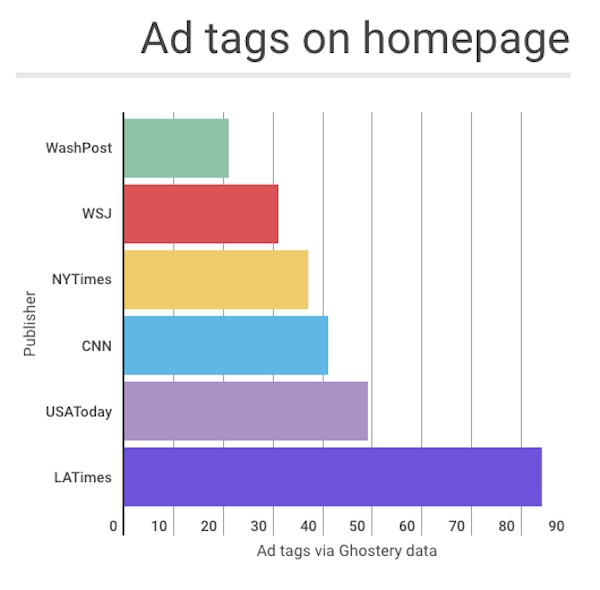The Washington Post cuts off ad tech vendors slowing its site

It’s hard for publishers to say no to vendors that advertisers want to work with. But in its effort to speed up advertising, The Washington Post has had to rethink its use of vendors.
As the Post has built on its own proprietary ad products, it has cut out several of the ad servers, ad builders, native-ad and video vendors it used to work with.
“We go to our partners and say, ‘This is how fast things need to be executed; if you don’t hit this threshold, we can’t put you on the site,’” said Jarrod Dicker, the Post’s head of ad product and technology. “We found that vendors we do use are ones that went back to their engineering teams and found out how to expedite their loads. … The vendors that haven’t been able to come to the table with faster solutions, we no longer integrate with.”
The Post declined to name which vendors they’ve dropped or share how many vendors they’re currently working with. But Dicker said that over the past year, the publisher has decreased its reliance on vendors “significantly.”
The Ghostery tracker tool shows that the Post has fewer tags fire on its homepage than do other large news publishers.

The Post has been able to reduce dependence on vendors because its growing internal product development team creates products that it uses in lieu of third parties. Over the past year, the team has grown from three to 10 members. And it has licensed its products to about 110 companies, which include publishers like Tronc.
But the Post can’t end its reliance on vendors altogether, though. Publishers need exchanges and programmatic platforms to bring in advertisers at scale. And advertisers want to have the option to use vendors their clients want.
To keep track of the vendors advertisers bring on, the Post relies on (another!) vendor called Domo, which tracks and analyzes the performance of other vendors. But since new ad tech companies are always springing up, it’s unlikely that even a specialized firm like Domo can immediately plug into every third party that Post advertisers use. What matters is whether the service can track the majority of them.
“Even if we only tracked 80 percent, that is still a win,” said Jason Tollestrup, director of programmatic at the Post. Tollestrup declined to estimate what percentage of vendors he believed Domo could track.
Having relationships with vendors has other uses aside from driving revenue. The Post’s internal product-development team can learn from them as it creates new products that it licenses to other publishers.
“In the past year, our focus has been to build first, and not just replace reliance on vendors, but to actually infiltrate the vendor space ourselves,” Dicker said.
Photo via The Washington Post
More in Media

Meta AI rolls out several enhancements across apps and websites with its newest Llama 3
Meta AI, which first debuted in September, also got a number of updates including ways to search for real-time information through integrations with Google and Bing.

Walmart rolls out a self-serve, supplier-driven insights connector
The retail giant paired its insights unit Luminate with Walmart Connect to help suppliers optimize for customer consumption, just in time for the holidays, explained the company’s CRO Seth Dallaire.

Research Briefing: BuzzFeed pivots business to AI media and tech as publishers increase use of AI
In this week’s Digiday+ Research Briefing, we examine BuzzFeed’s plans to pivot the business to an AI-driven tech and media company, how marketers’ use of X and ad spending has dropped dramatically, and how agency executives are fed up with Meta’s ad platform bugs and overcharges, as seen in recent data from Digiday+ Research.








